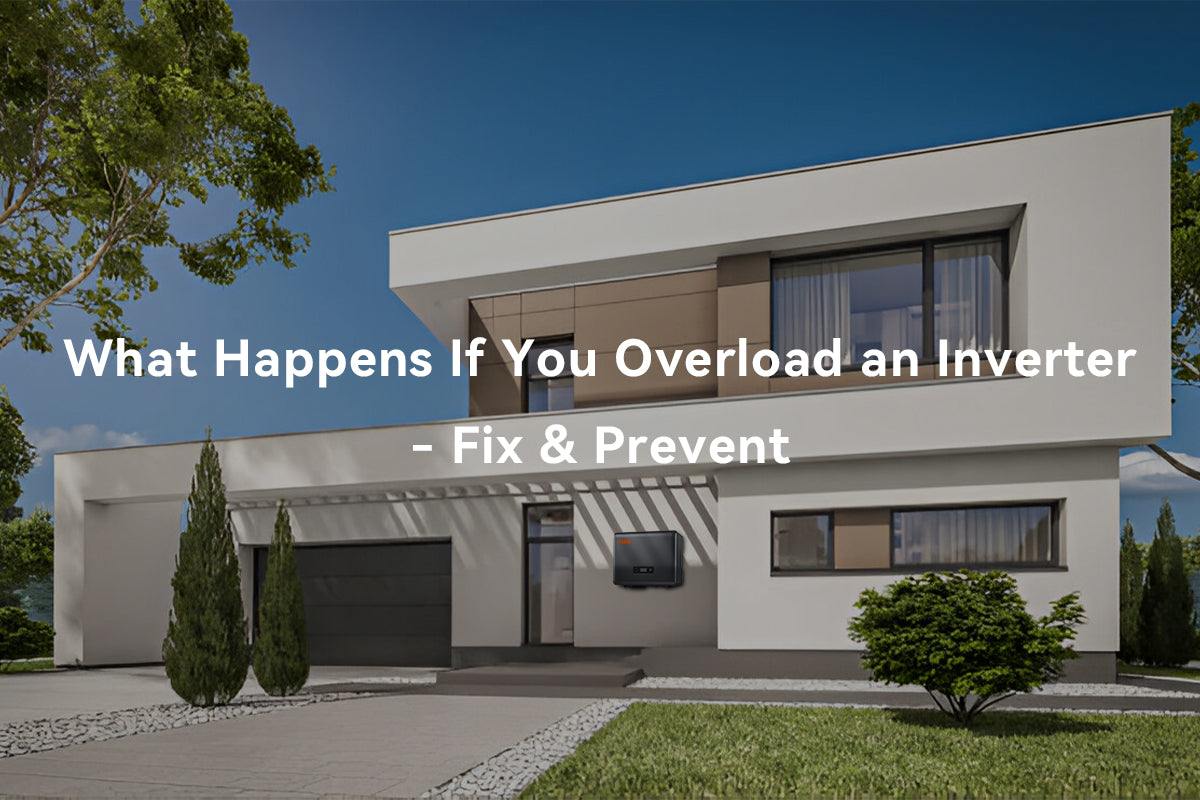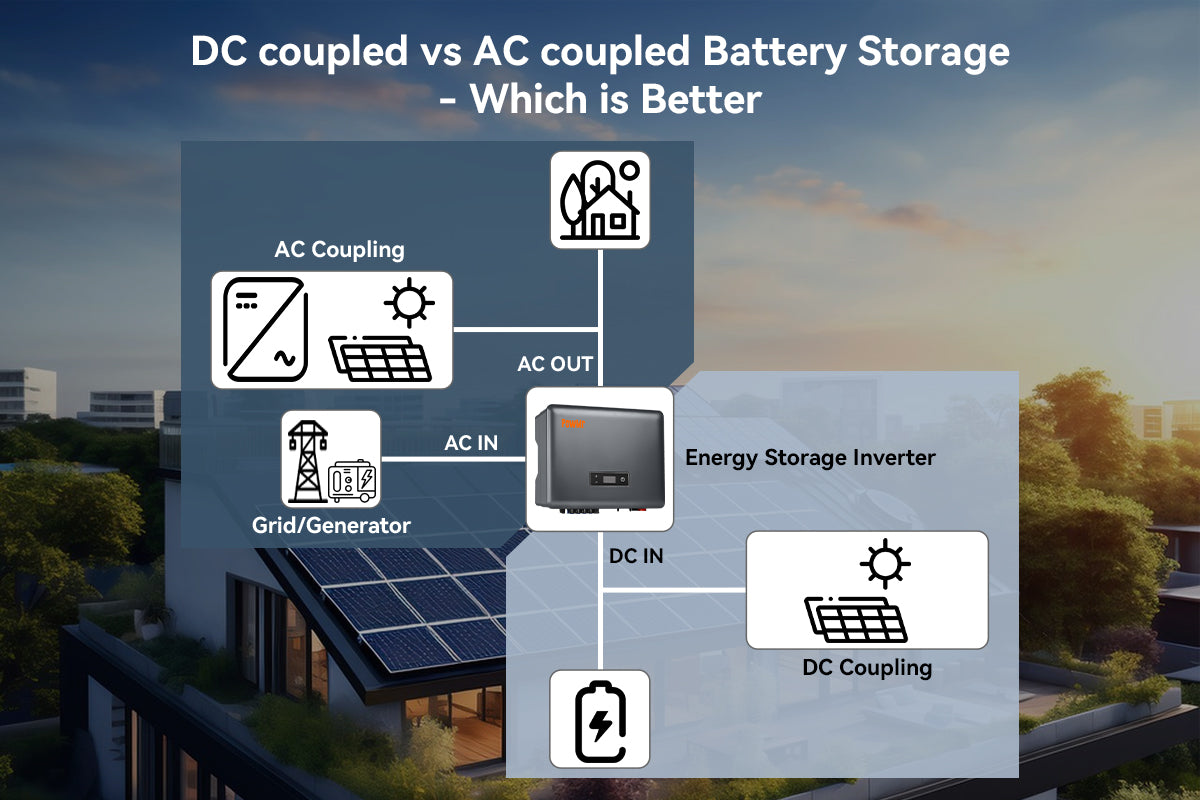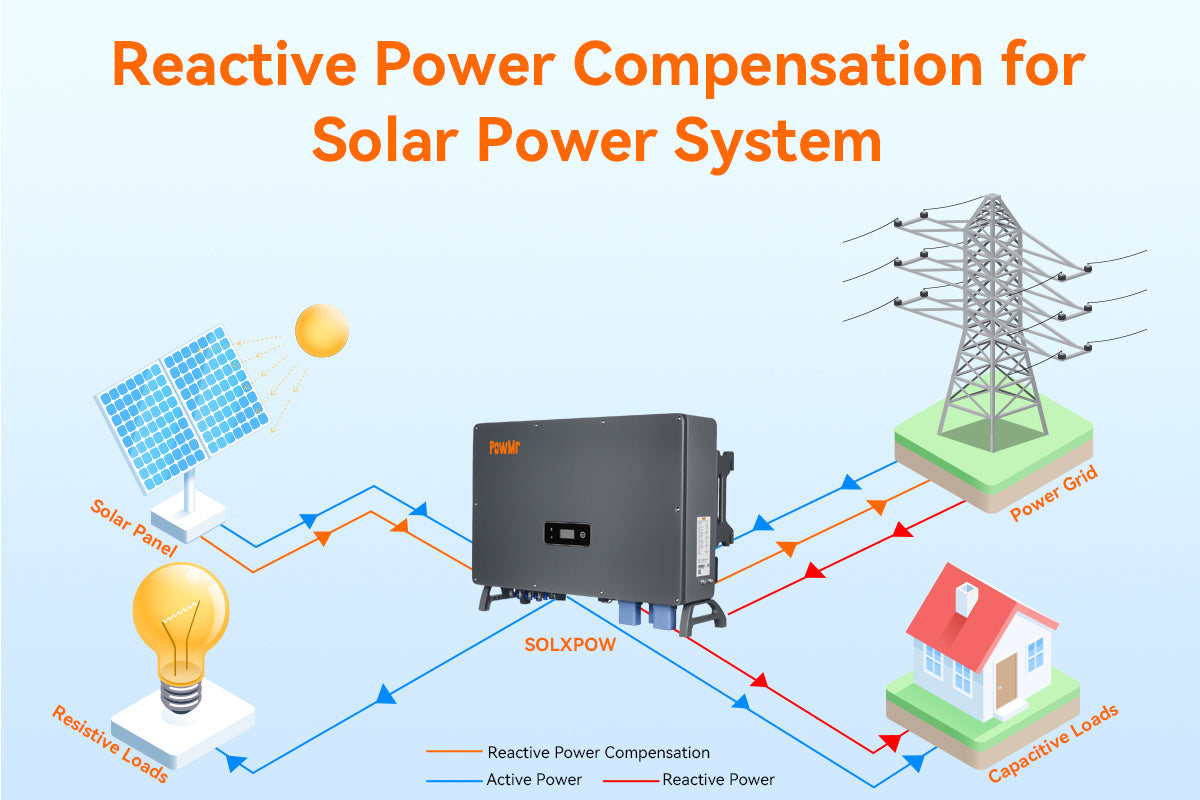Inverters play a crucial role in our daily lives by converting DC (direct current) power into AC (alternating current) power, but what happens when an inverter is overloaded?
This comprehensive guide will delve into what an inverter AC overload is, when it is acceptable, what happens when an inverter is overloaded, the causes and consequences of AC overload, and how to address and prevent it.
What is inverter AC overloaded
An inverter AC overload occurs when the power on the AC output exceeds the inverter's nominal power to supply electricity.
Temperal Overloaded
In fact, solar inverters can handle a certain range of AC overloads for a short period, where the inverter is subjected to a power demand spike that exceeds its rated capacity. This can happen during the initial startup of inductive loads or heavy appliances like air conditioners or refrigerators, which require a higher power surge to start.
For example, the PowMr low-frequency inverter can withstand surge power up to three times its own capacity, ensuring the stability of the power system when starting large inductive loads.
Continuous Overloaded
Another scenario is that AC side overloading does not damage the inverter, which is common in on-grid inverters. For example, the SOLXPOW energy storage inverter supports not only a brief overload of twice the rated power but also a continuous AC overload of 1.1 times the rated power.

The reason for increasing the AC overload capability of the inverter is that in some areas with abundant solar radiation, the actual power generation may exceed the rated power. This ensures that during good radiation conditions and peak sun hours, solar power generation is not restricted, fully converting solar energy into AC power for grid feeding or load usage.
This technical support, combined with the DC overloading/over paneling discussed in our previous article, can significantly improve the power generation efficiency and utilization of solar energy.
What Happens If an Inverter Is Overloaded?
Below, we will discuss the potential consequences when an inverter exceeds the specified overload capacity.
Inverter shows a red light
The red light on the inverter typically indicates an error or fault condition, which could be triggered by the overload. The specific meaning of the red light can vary depending on the manufacturer and model of the inverter.
Note:
The specific meaning of the red light can vary depending on the manufacturer and model of the inverter. Generally, reasons when the inverter shows a red light include:
- When it is detected that the input voltage is too low, the inverter will automatically switch to the under-voltage protection state
- When the input voltage is detected to be too high, the inverter will automatically switch to the overvoltage protection state
- The inverter may switch to overcurrent protection state
- The inverter is overloaded, causing the fuse to blow
Inverter shutdown or tripping
Overloading can trigger built-in safety mechanisms, causing the inverter to shut down or trip. This safeguards the inverter from further damage and protects connected devices.
Reduced efficiency and performance
Overloading the inverter regularly can negatively impact its efficiency and overall performance. It may lead to voltage fluctuations, increased power consumption, and shorter lifespan.
Potential damage to electrical devices
Overloading an inverter can strain connected electrical devices, potentially causing them to malfunction or even suffer permanent damage.
Why my inverter is showing overload?
Several factors can contribute to an inverter becoming overloaded:
Why Does My Inverter Show Overload Without Load?
Sometimes, an inverter displays an overload indication even without any load connected. This could be due to:
-
Normal AC Overload
If you are using a grid-tied inverter and the solar array produces more power than the inverter's capacity, it may show an overload indication. This is normal as long as it does not exceed the inverter's tolerable overload range. -
Internal fault
The inverter might be experiencing an internal issue, such as a malfunctioning component or faulty sensor, falsely detecting an overload. -
Wiring or grounding problem
Improper wiring or inadequate grounding can cause electrical imbalances, leading to overload indications. Ensure all connections are secure and follow proper installation guidelines.
High-power demand
Connecting power-hungry devices that exceed the inverter's capacity, such as air conditioners, refrigerators, or heavy-duty machinery, can overload the inverter.
Power surge or short circuit
Sudden spikes in power supply or short circuits can lead to an overload condition.
If you connect iductive loads to the inverter, the inverter is possible to be overload when the load power consumption reaches or exceeds the peak power of the inverter.
For the life of the inverter, please regulate the use of the inverter and the surge power of the loads shoud be taken into account.
Particular care is needed when inductive loads are to be connected.
Inadequate wiring or faulty connections
Incorrect wiring, loose connections, or damaged cables can cause electrical resistance and increase the likelihood of overloads.
Inverter undersizing
Choosing an inverter with insufficient power capacity for your intended load can result in frequent overloads.
What should I do if the inverter is overloaded?
Reduce the load and reset the inverter
If the inverter is overloaded on the AC side due to too many connected loads, first turn off the inverter and reduce the number of loads. Then, turn the inverter back on. If the overload message persists, use the reset button. If there is no reset button, turn off the system, wait a few minutes, and then turn it back on.
Restart the inverter and connect loads in stages
If the connected load power does not exceed the rated power of the inverter, check if the connected loads are inductive loads and whether their inrush power exceeds the inverter's surge capacity. You can try connecting connecting them one by one, and once the system's power supply is stable, connect the remaining loads.
How to prevent Inverter overload?
Accurate measurement of total load power
Sum up the power of all appliances. Make sure to include the startup power of inductive loads and the inverter’s own power consumption. Both continuous wattage and surge wattage must be within the inverter's capacity range.
Avoid starting too many inductive loads simultaneously
Turning on all inductive loads at once increases the risk of overload. If the combined startup voltage greatly exceeds the inverter's peak output power, it could damage the inverter due to surges.
Do not treat AC overload capacity as rated power
Although some inverters support continuous AC overload, it is not recommended to include the margin of AC overload in project design. Most inverters’ AC overload is intended for handling peak sun hours or occasional additional power generation. Running the inverter at overload continuously could shorten its lifespan.
FAQs on Inverter Overloads
Let's address some frequently asked questions regarding inverter overloads:
Will Overloading Damage the Inverter?
While an occasional overload may not immediately harm your inverter, sustained overloading can have detrimental effects in the long term. Excessive heat generation, component stress, and reduced lifespan are some of the risks associated with continuous overloading.
That's why it's crucial to invest in an inverter that offers reliable overload protection. Look no further than PowMr solar inverters! With PowMr, you can enjoy the peace of mind that comes with knowing your system is well-protected.
PowMr solar inverters go above and beyond by providing comprehensive system protection features. In addition to overload protection, they also offer safeguards such as overvoltage protection, undervoltage protection, as well as protection against over-temperature, short circuits, and reverse polarity.
Don't compromise the longevity and efficiency of your solar system. Choose PowMr solar inverters for unparalleled performance and robust protection. Invest in the reliability and durability that your solar power system deserves.
Does the inverter have a reset button?
How do I reset the inverter? Normally, you follow the manual, press and hold the ON/OFF button of the inverter for 15 seconds, and wait for the charging LED to flash rapidly, and this will reset the inverter.
What causes the inverter to malfunction?
The most common cause of a malfunctioning inverter is not following the steps in the installation instructions, such as not following the user manual recommendations and choosing an inappropriate cable type, gauge or combination of line fuses.
How do I know the inverter is not working?
When the inverter has a continuous sounding alarm, it is possible that the inverter is not working. The reasons for the continuous beeping alarm are overload or a stuck cooling fan. If there is an overload, remove the excess load.
Conclusion
Inverter overloads can be frustrating and potentially damaging. By understanding the causes, consequences, and steps to reset an overloaded inverter, you can effectively troubleshoot and resolve these issues. Remember to prioritize safety, follow the manufacturer's guidelines, and consult a professional if you encounter persistent problems with your inverter.



